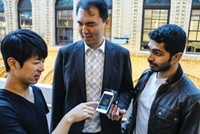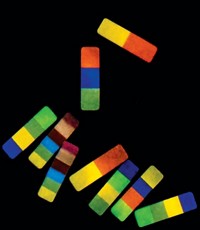Advertisement
Grab your lab coat. Let's get started
Welcome!
Welcome!
Create an account below to get 6 C&EN articles per month, receive newsletters and more - all free.
It seems this is your first time logging in online. Please enter the following information to continue.
As an ACS member you automatically get access to this site. All we need is few more details to create your reading experience.
Not you? Sign in with a different account.
Not you? Sign in with a different account.
ERROR 1
ERROR 1
ERROR 2
ERROR 2
ERROR 2
ERROR 2
ERROR 2
Password and Confirm password must match.
If you have an ACS member number, please enter it here so we can link this account to your membership. (optional)
ERROR 2
ACS values your privacy. By submitting your information, you are gaining access to C&EN and subscribing to our weekly newsletter. We use the information you provide to make your reading experience better, and we will never sell your data to third party members.
Analytical Chemistry
Smartphone Biosensors Go Straight To DVD
Spectrometry: DVD diffraction gratings could pave the way for cheaper smartphone point-of-care sensors
by Matt Davenport
February 8, 2016
| A version of this story appeared in
Volume 94, Issue 6
Lei Li of Washington State University has been captivated by the idea of using smartphones to perform spectrophotometry since researchers at the University of Illinois, Urbana-Champaign (UIUC), introduced it a few years ago. Because smartphones are ubiquitous and inexpensive compared with conventional analytical instruments, smartphone spectrometers are promising tools for performing biosensing assays and medical diagnostics outside the clinic or laboratory. Li and his team are working to make these smartphone devices even more accessible with an assist from another cheap and common technology—the DVD (ACS Sens. 2016, DOI: 10.1021/acssensors.5b00204). UIUC-style smartphone spectrometers rely on diffraction gratings to spread white light into a rainbow spectrum before entering a phone’s camera lens. That spectrum can then be used in spectroscopic assays, such as ELISA. But commercial glass diffraction gratings cost around $100, Li says. Plastic chips cut from $1.00 DVDs can diffract light into useful spectra, the team demonstrated. The researchers spiked cuvettes of tap water with paraoxon and showed that their platform could detect the toxin at nanomolar concentrations, which is comparable to the performance of commercial instruments, Li tells C&EN.




Join the conversation
Contact the reporter
Submit a Letter to the Editor for publication
Engage with us on Twitter